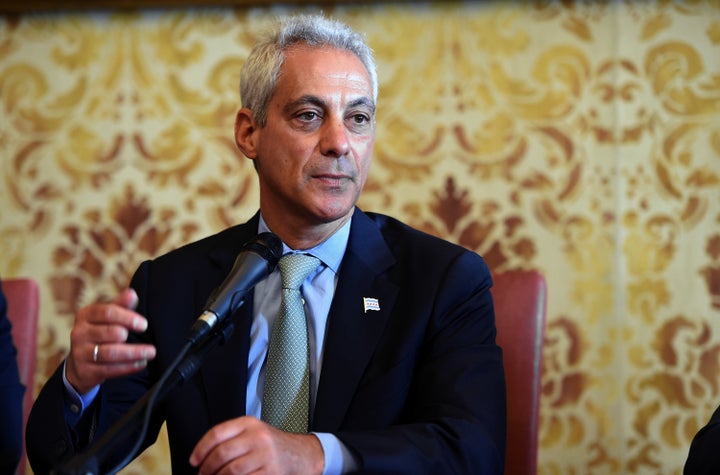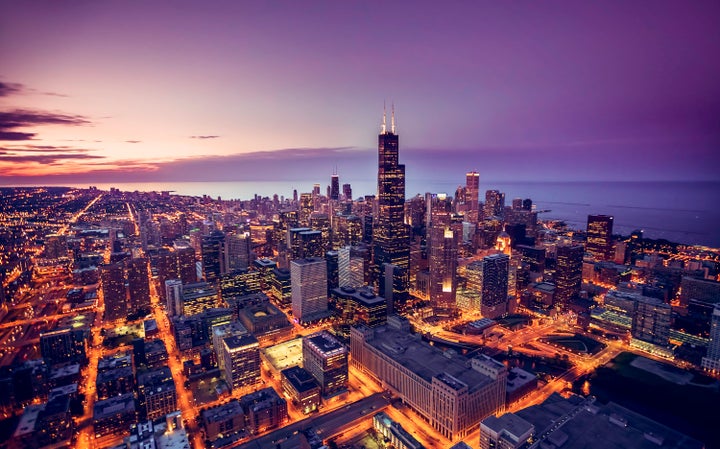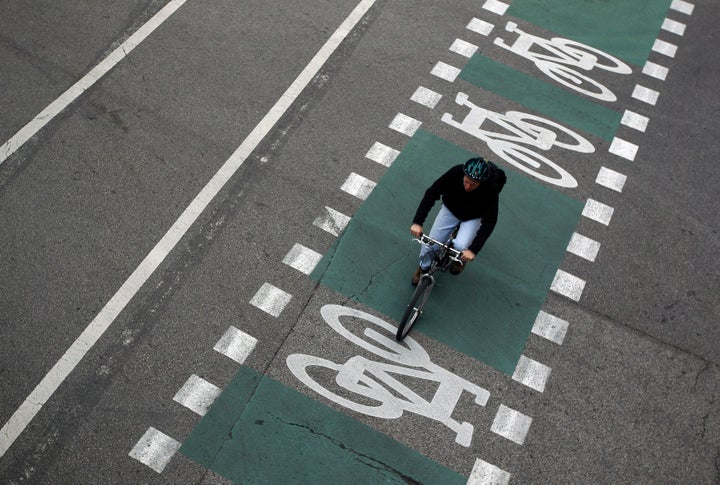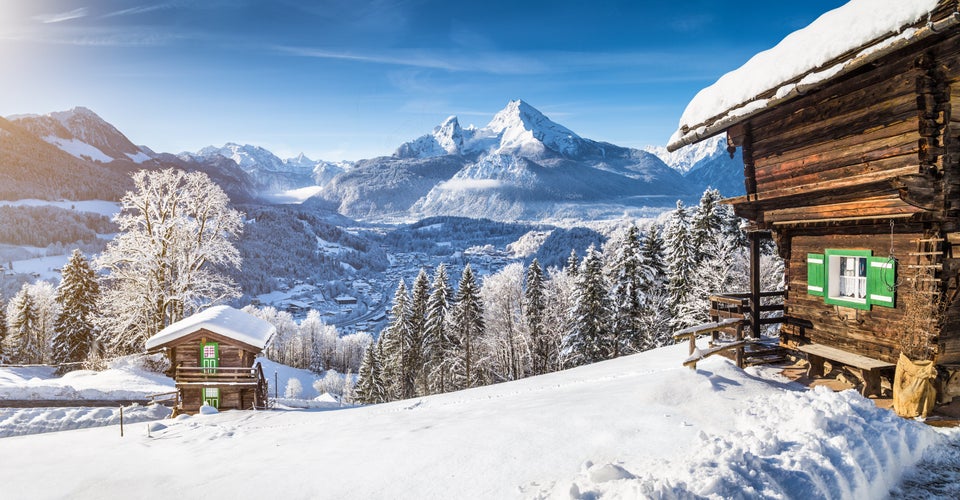As President Donald Trump chops away at federal efforts to slow down climate change, local officials across the country are promising to take action anyway. Chicago, the nation’s third largest city, is poised to be one of those climate leaders.
Trump announced in June that the United States would pull out of the Paris Agreement, a nonbinding accord to reduce carbon emissions signed by nearly every country. He claimed the agreement would hinder economic growth and take jobs away from Americans.
Hundreds of mayors immediately came out against Trump’s decision, pledging that their cities would still work to meet the goals laid out in the climate change pact. Chicago Mayor Rahm Emanuel (D) was one of the dissenting voices.
“The President’s decision to pull out of the Paris Accord is a poor attempt to pit environmental protection and economic growth against each other,” Emanuel said at the time. “It’s a false choice. Chicago has proven you can create jobs while reducing your carbon footprint, and we will continue to do both.”
This week, Emanuel reaffirmed his city’s commitment to address climate change, even as the Trump administration took another step toward doing nothing.

The Environmental Protection Agency proposed a rulemaking on Tuesday to abandon the Clean Power Plan, a move that would make good on Trump’s promise to scrap President Barack Obama’s signature rule curbing emissions from coal-fired power plants and focusing more on renewable energy. “The war on coal is over,” EPA chief Scott Pruitt said at an event with Kentucky coal miners the previous day.
Emanuel drew the line again. “The Trump Administration’s attempt to roll back the Clean Power Plan is shortsighted and does not make climate change any less real,” he said.
The mayor’s stand is backed by Chicago’s recent history. Over the past 20 years, the Windy City has made strides toward wasting less energy and worked to transition to renewable sources such as solar and wind. A better bike lane network across the city is just one of the more visible aspects of the city’s changes.
In the 1990s, Mayor Richard M. Daley vowed to revamp Chicago’s image ― from a city trapped by Rust Belt decay to the “greenest” in the country. By the time his 22-year run as mayor ended in 2011, Chicago had planted more than 600,000 trees and developed more than 7 million square feet of planted roofs, the most of any U.S. city at the time.
Emanuel built on his predecessor’s work, streamlining and coordinating existing initiatives. In 2012, he launched Retrofit Chicago, an effort to reduce energy use in public and private buildings, municipal operations and residences. This year, the program earned the city an Energy Star Partner of the Year Award, bestowed by the EPA and the U.S. Department of Energy.

As of 2015, Chicago had already reduced its carbon emissions by 11 percent from 2005 levels, which is nearly halfway to the city’s Paris Agreement goal of a 26 percent reduction by 2025. The city managed this even as it saw a 7 percent increase in jobs.
In April of this year, Emanuel said that all public buildings in the city would be powered by 100 percent renewable energy by 2025.
Energy policy experts lauded Chicago’s efforts to reduce carbon emissions, although they pointed out there’s still more the city can do. Chicago is doing “a pretty good job,” said Jessica Collingsworth, a Midwest energy policy analyst at the Union of Concerned Scientists.
Targeting energy efficiency makes sense since 70 percent of the city’s emissions in recent years have come from its aging residential, commercial and industrial buildings.
“It’s the best, the fastest, the cheapest and most environmentally sound way to reduce carbon pollution,” said Howard Learner, executive director of the Environmental Law Policy Center, a Midwestern legal advocacy organization.
But Learner thinks Chicago could be more aggressive in its goals. With Illinois producing abundant wind and solar power, he’d like to see all municipal buildings in the city powered by renewable energy by 2022 ― three years ahead of schedule.
Before Chicago pledged to meet the emissions goals outlined in Paris, Collingsworth said the city had its own Climate Action Plan ― but that hasn’t been updated since 2010. She also noted that the city could improve its public transit system beyond the Loop business district and the affluent North Side.
Chicago could also expand its focus on cycling, Collingsworth said. Although Bicycling magazine named it the most bike-friendly U.S. city in 2016, partly for its bike-sharing program and new park and trail system, she said some bike lanes are not as visible as they should be to both cyclists and drivers. She’d also like to see bike-sharing made more available throughout the city.
Emanuel’s sustainability office did not immediately respond to questions about these critiques.
Of course, there are limits to how far the city can cut its energy use. Chicago’s weather extremes, particularly in winter, are challenges that cities in more temperate climates don’t face. And it is shouldering billions of dollars of debt, in part of the city’s own making and in part caused by the state going two years without a budget, Collingsworth said.
Looking ahead, implementation of the state’s Future Energy Jobs Act should offer a big boost to Chicago’s sustainability efforts, according to Collingsworth, Learner and Mohammad Shahidehpour, a professor at the Illinois Institute of Technology who focuses on sustainable energy integration.

Among other key steps, the Future Energy Jobs Act will create a community solar program to allow entire neighborhoods to enjoy the benefits of solar energy, provide job training and help people pay for efficiency upgrades through their utility bills. Learner said it could also drive renewable energy and efficiency investments, to the tune of 3,000 megawatts of additional solar energy and 1,350 megawatts of additional wind power in Illinois.
In December, Chicago will host the North American summit of the Global Covenant of Mayors for Climate and Energy, where municipal leaders from the U.S., Canada and Mexico will discuss their commitments to the Paris Agreement and announce city-specific climate programs and policies.
Learner wants to hear how the mayors of Chicago and elsewhere will match their deeds to their words.
To reduce the carbon emissions that drive climate change, he said, “We want to see those words be followed up with actions that produce strong meaningful results.”

